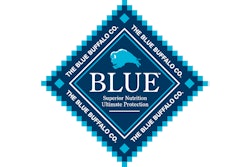
Compared to the energy and sports drink or coffee markets, pet food has higher retail volume and retail growth projections, Lonnie Hobbs, agricultural economics doctoral student at Kansas State University said in his presentation at Petfood Forum CONNECT. The global pet food market’s strong growth has driven increased competition along with opportunities to diversify.
“The increase in competition forces pet food companies to reevaluate their marketing strategies to ensure that they are providing the products that pet food customers want,” he said. “To understand exactly what pet food customers want, there is a need for research to provide to pet food company decision makers.”
The overall amount of peer-reviewed, published scientific literature about pet food remains small compared to other fields. Even within that limited pool, most research on pet food focuses on nutrition, health and ingredient usage, Hobbs said. His research aims to fill that gap and:
- examine the attribute-based strategies and attributes that are being marketed to the customers,
- examine the customer's post purchase perception of these attributes and strategies,
- evaluate the extent of the overlap and
- identify the product attributes that are associated with more positive product ratings.
Three circle framework analysis of pet food marketing
Hobbs conducted an analysis of consumer perceptions of two brands of pet food: Purina ONE SmartBlend and Blue Buffalo Life Protection formulas. Hobbs gathered 5,837 online customer reviews and product descriptions for the two brands of pet food on Amazon, Chewy, Petco.com and Walmart.com.
“This research, this framework and the results of this study help pet food companies to better align their marketing strategy with customer-desired attributes,” Hobbs said.
To structure his study, Hobbs used the three-circle framework developed by Joel Urbany and James Davis and described in the Harvard Business Review. The three circles form a Venn diagram made up of three aspects of a pet food brand’s strategy.
1. Customer needs
- Information that the customers actually demand or perceive as value from the products
“For this research, we consider customer value to be a function of perceived benefits, and prices, meaning that the higher perceived benefits a customer gets from a product at the lowest price, the higher the customer value,” Hobbs said.
2. Company's offerings
- Information that the company is marketing to the customers as value
“The goal of the company is to increase the overlap of these two circles as this shows that the company is effectively communicating the value of their product to their customers and their customers are actually perceiving this value as it is being communicated,” he said.
3. Competitors’ offerings
- Competitors’ information and attributes marketed as value to the customers
Hobbs pointed out one section of the diagram where a company’s offerings overlapped with consumers’ demands, yet competitors’ do not.
“This is the company's primary point of differentiation, which allows the company to increase their competitive position within the market."
















